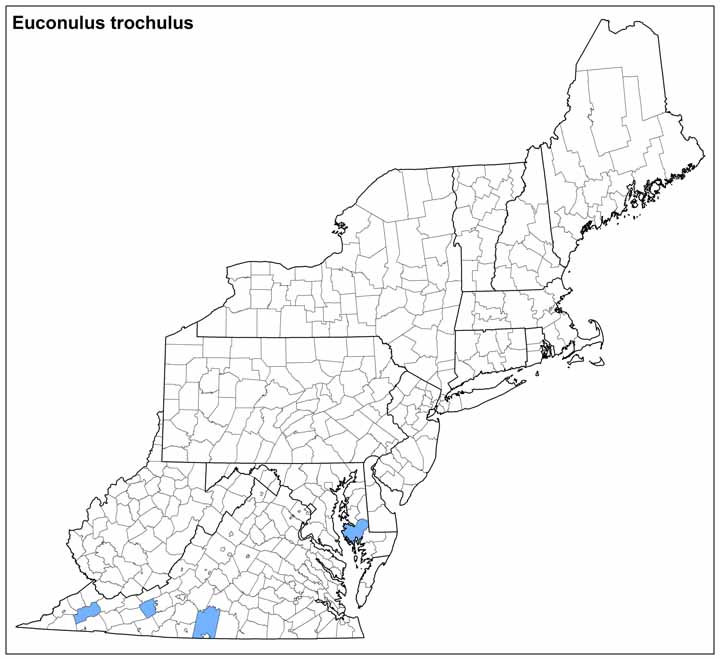Land Snails
.jpg)
Photo(s): Euconulus trochulus shell © Larry Watrous.
Click photo(s) to enlarge.
Euconulus trochulus (Reinhardt, 1883)
Family: Euconulidae
Common name: Silk Hive
Identification
Width: 2-3 mm
Height: 2-3 mm
Whorls: 7
The shell of Euconulus trochulus is more angular overall than others in its genus. The top of the shell comes almost to a point and the base is relatively flat. A deep suture and the sharp keel of the outer whorl, which is also apparent in the inner whorls, create the impression of a terraced surface (Pilsbry, 1946). The aperture is narrow and has a trapezoidal shape. Close radial striae and very fine spiral lirae compose the microsculpture of the shell.
Recent genetics work suggests that shell characters may not be useful in distinguishing between species in the group of nominal species E. chersinus, E. dentatus, and E. trochulus (J.C. Nekola, pers. comm.).
Ecology
This species is usually found in moist leaf litter (Hubricht, 1985).
Taxonomy
Taxonomy of the genus Euconulus is in a state of flux. Recent genetics research shows that Euconulus trochulus is part of a group of nominal species that also includes E. dentatus and E. chersinus (J.C. Nekola, pers. comm.). Previous shell morphology guidelines may no longer be useful to distinguish between the members of this group.
Euconulus trochulus has also been known as Conulus chersinus trochulus, C. trochulus, and Euconulus chersinus trochulus.
Distribution
Euconulus trochulus is widespread throughout the southeastern United States and parts of the Midwest (Hubricht, 1985). It is near its northern limit in Virginia, where it is only reported from a few southern counties.
Because beehive snails are difficult to identify, and there is now uncertainty about the taxonomy of this nominal species, the usefulness of historic reports is unclear.
Conservation
NatureServe Global Rank: G5, Secure (pending taxonomic revision).
Meegan Winslow 11/2012
Ken Hotopp 2/2013
Update KH 3/2018



